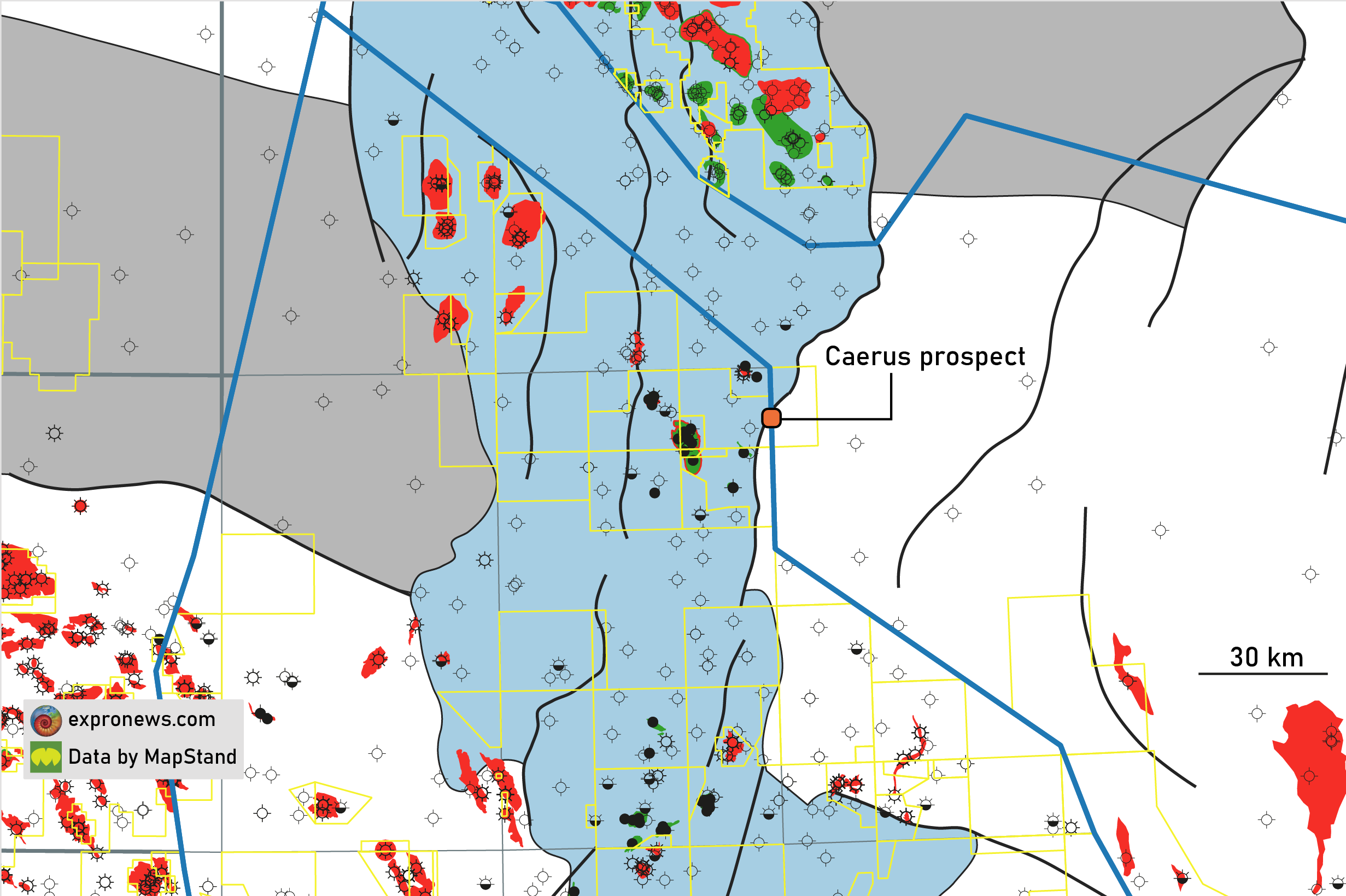As the North Sea matures further, there is a clear trend of more “challenging” prospects to appear or re-appear on the exploration radar. Prospects that were ignored for years because of lower hanging fruit being ready to test in other parts of the basin.
An increase in cross-border exploration activities across the North Sea is certainly part of this trend. For example, Aker BP acquired an interest in UK licence P2511 in a likely attempt to further look at the cross-border injectite play that the company mainly focussed on in Norwegian waters thus far. ONE-Dyas developing the N05-A discovery that straddles the Dutch-German offshore boundary is another example, and the Triassic Edinburgh prospect likely to be drilled by Shell in the Central North Sea also carries a significant cross-border element.
Caerus
Petrogas’ Caerus prospect on the eastern margin of the Dutch Central Graben clearly falls into this cross-border category too. It represents one of the last undrilled North Sea Chalk prospects on top of a Zechstein salt dome, and the fact that the mapped closure straddles Dutch-German waters may be a reason as to why it was not tested before. At the end of the day, the prolific Hanze field operated by Dana is located in a geological mirror position on the western side of the Dutch Central Graben.
Attend the Prospex and Petex Conference in London this week and listen to Nick Dancer and Petra Unverhaun from Petrogas who will present the prospect both in oral and poster format.
This is not to say that the cross-border element is the only reason why the potentially 247 MMboe (P50 in place) in Caerus wasn’t drilled before. Looking at the cross-section below, it can be seen that the area where the main source rock is probably at its maximum generative potential is towards the southwest (deepest). For oil to subsequently migrate into the Caerus closure, some lateral distance has to be bridged. Based on a straightforward subsurface reconstruction of stratal geometries, it is likely that the prospect was connected to the kitchen during the Eocene though.

In support of hydrocarbons being present in the prospect, there are signs of shallow gas anomalies in the seismic over the Caerus structure, suggesting that gas leakage is taking place. Nevertheless, Petrogas carries charge as the main risk of the prospect.
The simple four-way dip closure in the Chalk has been mapped in detail thanks to the 3D seismic surveys acquired in the area. Due to the presence on top of the Zechstein salt dome, the Chalk is expected to be heavily faulted – and fractured – and is mostly preserved in the German part of the licence.
Petrogas is currently waiting for the German authorities to extend their licence. If successful, which could be helped by the fact that the licence is not close to protected areas, the company will embark on an in-depth basin modelling study in order to further de-risk the charge element of this exciting prospect.
HENK KOMBRINK




